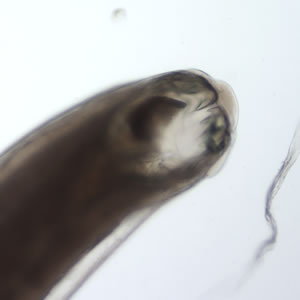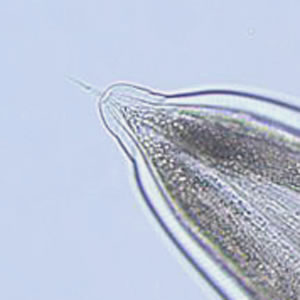
Case #185 – August, 2006
A worm measuring approximately 11 mm in length was sent to CDC for identification by a laboratory in the Southeastern United States. The following images were obtained by placing the worm on a 1″ × 3″ glass slide and gently “floating” a 24 × 30 mm glass coverslip on top of it with water. Figure A shows the anterior end of the worm. Figures B and C (a digital zoom of B) show the posterior end of the worm. All images were captured at 100× magnification. Based on the images, identification at the genus level, as well as determination of whether the worm is male or female, is possible. What is your diagnosis? Based on what criteria?

Figure A

Figure B

Figure C
Images presented in the DPDx case studies are from specimens submitted for diagnosis or archiving. On rare occasions, clinical histories given may be partly fictitious.
DPDx is an educational resource designed for health professionals and laboratory scientists. For an overview including prevention, control, and treatment visit www.cdc.gov/parasites/.